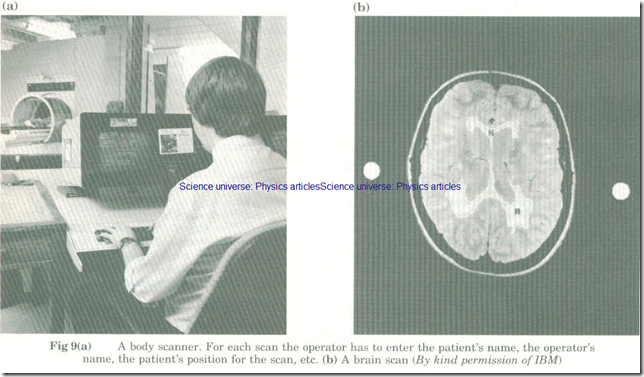Medical Uses of Computers
Computers are used in the medical field for a variety of purposes.
MEDICAL ADMINISTRATION
There are a large number of examples in this country of the computerization of medical records of patients. It would be possible for the computers involved to be linked. Then all health records for each person could be compared. This has not become common practice so far and the examples given mainly use unconnected systems.
Examples of the use of computers to store patient records
In hospitals
Computers are used to keep records of:
1 Casualty patients.
2 Outpatients receiving courses of treatment.
3 Patients resident in the hospital.
In doctors’ surgeries
Records are still kept manually in many cases.
Where computers are used in surgeries they usually deal with:
1 The medical history of each patient-the system stores details of all patients on the doctors’ lists. The data is more organized than when it is kept on paper files. Details of prescriptions, results of tests and any previous illnesses are readily available to the doctor.
2 Appointments-the computer stores a diary for each doctor. When a patient rings up to make an appointment, the receptionist uses a work station to check for a free time and to make the appointment.
3 Reminders to patients-some patients are subject to regular checks or they may be due for immunization or vaccination or some form of treatment. The computer can produce a reminder to be sent to them and make an appointment.
4 Prescriptions-the details of drugs prescribed for patients can be used to print prescriptions which the doctor then signs.
To store data on organ transplants
Some people have a defective organ such as their liver, kidneys, heart or lungs. This may be caused by disease or by an accident. In some cases it is possible for surgeons to transplant a healthy organ from a patient who has died. For some organs such as kidneys these transplants are very successful.
In this country data on all patients requiring new organs is stored on a computer by the United Kingdom Transplant Service in Bristol.
The information stored on each patient includes:
1 Their tissue type-an organ can only be transplanted from one person to another if their tissues match.
2 Their blood group.
3 Their clinical status- how ill they are.
If an organ becomes available then the computer is contacted to find a patient who needs one and whose tissues match.
If an organ is of a rare tissue type records can be checked throughout Europe. The Bristol computer has direct links with the EuroTransplant computer in Leiden, Holland and with ScandaTransplant in Scandinavia.
INFORMATION RETRIEVAL
As in many scientific subjects, doctors and consultants have great difficulty in keeping up with research. Research is being carried out throughout the world. The results of this are produced in papers, in reports and as articles in medical journals. It is very difficult to locate results of research on any chosen subject. For this reason large databases are set up containing all the articles produced, or in some cases abstracts from them. An abstract is a summary which contains all the important terms and references from an article.
In order to find a reference it is necessary to connect by terminal to the computer containing the data bank. The computer can then be asked to search for all articles containing certain keywords. For instance information about tissue typing and kidney transplants could be obtained by asking the computer to search for ’tissue’ and ‘kidney’.
CONTROL OF EQUIPMENT
Equipment in hospitals may be connected to a computer:
1 As a form of data logging so that data can be analysed later.
2 To adjust temperature, etc in an environment e.g. for patients in intensive care.
3 To improve the accuracy with which equipment can operate. Figure 9 shows a computer being used to control and record brain scans.
Fig 9(a) A body scanner. For each scan the operator has to enter the patient’s name, the operator’s name, the patient’s position for the scan, etc. (b) A brain scan (By kind permission of IBM)

